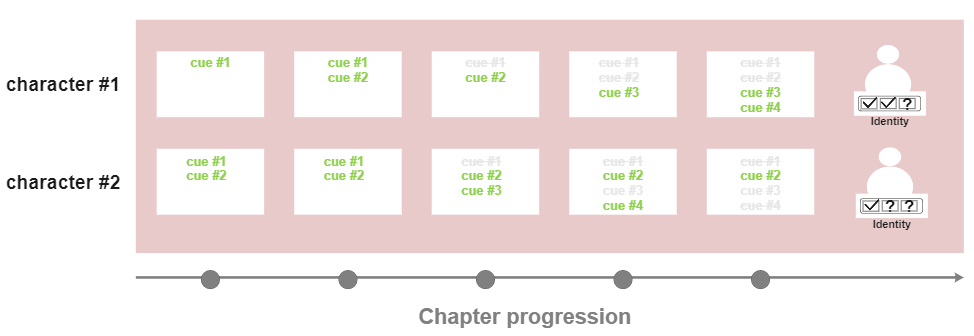For those of you who haven’t played this game, Return of the Obra Dinn is single-handedly a master piece in narrative game design, a highly polished game that contains one of the most innovative and bold narrative design proposals I remember.
There aren’t story spoilers in this article, but there is a level of deconstruction of the game systems, so if you want to have an unaltered experience, I recommend that you go and play the game right away, before reading further. If you have already played the game, I hope this article will help you parse, in a systemic way, where some key game systems and dynamics lie.
In a nutshell, in Return of Obra Dinn the player needs to inspect a ship, and observe cues attached to different points in time that show what happened during the length of one of its journeys. The final goal for the player is to identify names, occupations and causes of death of all the passengers of the ship, and the gameplay elements that contain the information are dialogues, staging of dramatic scenes, and a couple photographies. All of which can be accessed and inspected with almost complete freedom, a design choice that allows player’s agency, but also represents an extra design challenge when producing the puzzles.
In this article I would like to elaborate, specifically, about the importance of ambiguity, and why I think its articulation is a huge design pillar that helps delivering a flowless player experience despite the ambition of the premise of the game.
Ambiguity and game dynamics
Ambiguity in output
The way I see it, in Obra Dinn we can identify ambiguity defining the game experience in two directions:
- When we find visual cues and pieces of information, they are granular, isolated and non self-explanatory. Just seeing a character holding a weapon in a given time frame doesn’t mean anything in itself. But if I put it in perspective after finding what they did with the weapon in the next moment, I might clarify that they committed a murder.
- And then, at the end of the process, on the output side. In the journal, only the names of the passengers of the ship appear, and the characteristics of their identities are not defined. They could all be American. They could all be German. It’s our task in the game to define all those traits as we investigate, to make each identity different and unambiguous.
How input is disambiguated
Most of the characters you encounter throughout the game could at first be almost anyone from the list of passengers. Your task then is to observe visual, causal, and sonorous cues referring to the character to manage reverse engineering an identity (and cause of death).
For me the most fun and engaging part is how this journey develops, and how the player can figure it out just using intuitive techniques like visual observation, elimination, or comparison.
The way I visualize this journey from a game dynamics point of view, as the player progresses in their exploration, they come across different pieces of information they can either discard or compound to come up with a more and more unambiguous identity. All this information is constantly flowing, so the player needs to be constantly engaged in this process of elimination/factoring.

The difficulty of the game is considerable, and a high level of attention is constantly required in order to find the meaningful cues. However, the relevant information is normally clearly discernible from the noise because the different cues don’t overlap in obscure ways.
For example, if I come across two characters that are women, that already eliminates many options regarding what their identity could be, and then I know that I need to find the details that make them different.
I don’t remember encountering red herrings where the design intentionally left me unsure about my deductions, and I was also never doomed to grindy trial and error. If there is ambiguity in the information I collect, I always have agency, I can always go and find more information that will help redirecting attention to the right path.
An example of elegant design
I found this game quite difficult to complete, as there are almost no meta help systems whatsoever (besides a very simple gating system). From my perspective, a big part of the reason why the player will continue trying despite that is that there’s always a feeling of progress and continuous discovery that makes the experience engaging. The extremely polished level design and the solid game loop and dynamics make complications and patches like help systems unnecessary.
I highly recommend Return of Obra Dinn to anyone who’s interested in games where story is not just a mere isolated component of the loop, but it actually synergizes with gameplay, and it does it in interesting new ways.

Leave a Reply